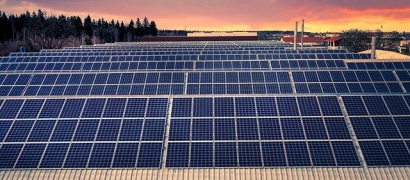This milestone moves the company one step closer to bringing this breakthrough innovation to market in the $150 billion global solar industry.
Anti-reflective coatings are applied to every solar cell during the manufacturing process. These coatings are critical to minimize reflection of sunlight. Solar cell anti-reflective coatings maximiz the number of photons that can be absorbed into the solar cell, where the photons are converted into energy. Today’s industry-standard anti-reflective coatings reduce reflectivity to approximately 10%, which means they allow the capture of 90% of the sun’s photons.
As a result of IntriEnergy’s latest phase of development, D·ARK was able to reduce the amount of reflected light to below 2%. IntriEnergy is continuing to refine the prototype with the goal of reaching near zero reflectivity of potential energy across an even wider range (400 – 1,100 nanometers) of the solar spectrum. This will allow the technology to capture the entire spectrum of sunlight, a major advancement in the solar industry.
“IntriEnergy’s novel anti-reflective coating is based on a diamond-like carbon structure that utilizes a simple one-step application, achieving near-zero reflectivity (99%) over the entire solar spectrum,” IntriEnergy’s Vice President of Product Development, Pere Soria said. “D·ARK has been engineered as a drop-in replacement, enabling the industry to increase energy output of their solar panels, while lowering the cost of manufacturing. D·ARK’s 10% increase in energy output is a significant step in improving the efficiency of a solar cell.”
“Our Research and Commercialization Team has been working diligently to develop our D·ARK pre-commercial prototypes in preparation for our introduction to the $150 billion global solar industry," IntriEnergy CEO Jackie Coffey said. "The work underway was focused on the objective of achieving a broader sunlight spectrum, bringing the reflection of sunlight to below 2% and we are thrilled that we have achieved this significant technical milestone.”


